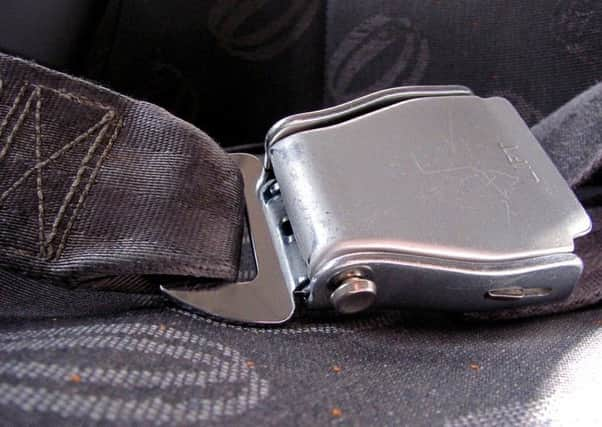Child car seats: What you need to know as new laws come into force


The legislation bans manufacturers from making new models of booster cushions for children shorter than 125cm tall or weighing less than 22kg.
They will only be allowed to manufacture new backless booster products for children over 125cm tall or heavier than 22kg - which ever comes first.
Advertisement
Hide AdAdvertisement
Hide AdThe law has been introduced to ban the use of car booster seats without a back rest.
But it only applies to new products entering the car seat market. It does not affect any booster seats that parents are currently be using - or stock in shops already in the shops.
Until now, children weighing as little as 15kg - an average weight for a three-year-old - have been allowed to travel in a backless booster seat.
But the new law was drafted when safety experts said this type of seat was not suitable for smaller children because the adult seat belt isn’t designed for such a small body, and a booster seat does not protect a child in the event of a side impact.
Advertisement
Hide AdAdvertisement
Hide AdParents can carry on using existing child car seats but are being urged to reconsider how safe the seat is for the individual child using it.
Here’s the official government advice on protecting children in cars:
1. Using a child car seat or booster seat
Children must normally use a child car seat until they’re 12 years old or 135 centimetres tall, whichever comes first.
Children over 12 or more than 135cm tall must wear a seat belt.
Advertisement
Hide AdAdvertisement
Hide AdYou can choose a child car seat based on your child’s height or weight.
Height-based seats
Height-based seats are known as ‘i-Size’ seats. They must be rear-facing until your child is over 15 months old. Your child can use a forward-facing child car seat when they’re over 15 months old.
You must check the seat to make sure it’s suitable for the height of your child.
Only EU-approved height-based child car seats can be used in the UK. These have a label showing a capital ‘E’ in a circle and ‘R129’.
Weight-based seats
Advertisement
Hide AdAdvertisement
Hide AdThe seat your child can use (and the way they must be restrained in it) depends on their weight.
You may be able to choose from more than one type of seat in the group for your child’s weight.
0kg to 9kg = Group 0: Lie-flat or ‘lateral’ baby carrier, rear-facing baby carrier, or rear-facing baby seat using a harness
0kg to 13kg = Group 0+: Rear-facing baby carrier or rear-facing baby seat using a harness
Advertisement
Hide AdAdvertisement
Hide Ad9kg to 18kg = Group +1: Rear- or forward-facing baby seat using a harness or safety shield
15kg to 36kg = Group 2 and 3: Rear- or forward-facing child car seat (high-backed booster seat or booster cushion) using a seat belt, harness or safety shield
Only EU-approved weight-based child car seats can be used in the UK. These have a label showing a capital ‘E’ in a circle and ‘ECE R44’.
Fitting a child car seat
You must only use a child car seat if your car’s seat belt has a diagonal strap, unless the seat is either:
specifically designed for use with a lap seat belt
fitted using ISOFIX anchor points
You must also:
Advertisement
Hide AdAdvertisement
Hide Addeactivate any front airbags before fitting a rear-facing baby seat in a front seat
not fit a child car seat in side-facing seats
The Child Car Seats website has information on how to choose a seat and travel safely with children in cars.
Children with disabilities or medical conditions
The same rules apply for children with disabilities or medical conditions, but they can use a disabled person’s seat belt or a child restraint designed for their needs.
A doctor can issue an exemption certificate if a child is unable to use a restraint or seat belt because of their condition.